The song of the kokako should join the Maungatautari Sanctuary Mountain choir this year as yet another native species is re-introduced to the ecological island.
Maungatutari Ecological Island Trust general manager John Simmons says fund raising to re-establish the kokako is on-going and planning is also underway for the eventual arrival of kakapo.

Maungatautari’s Xcluder predator-proof fence is the longest fence of its kind in the world.
World’s longest
The ingenious fence is the longest predator-proof fence in the world and is key to the trust’s aims of restoring native flora and fauna to the mountain.
Before it was constructed, trials of different fences were conducted, testing their ability to keep out creatures from mice to deer.
The final fence had to be capable to excluding diggers, namely rabbits, squeezers – mice, rats and ferrets – and climbers, mostly possums and cats, and jumpers – deer.
The fence is too high for deer to jump. The mesh is too small for even baby mice to squeeze through.
Possums and cats can climb it but the overhang at the top prevents them getting in. However, these pests have discovered the overhang provides excellent shelter from rain.
Rabbits are deterred from digging under the fence by a “skirt” of mesh which extends a short distance from the base and is buried just under the surface of the ground.
An electric wire running along the top of the fence is its security system.
Should the fence be damaged by falling trees or limbs, staff are alerted to the location.
The aim is to restore the fence within 90 minutes, because it’s estimated that’s how frequently pests attempt to enter the sanctuary.
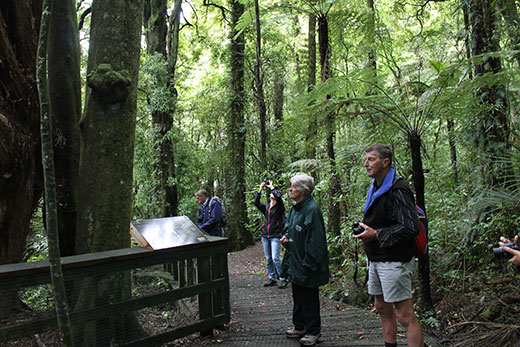
Tours with experienced guides are an excellent way to enjoy the mountain.
Mainland island
The ambitious scheme to create a mainland ecological island took its first official step in 2001, when the trust deed was signed.
In November 2003 two areas at the north and south of mountain, totalling 1.1 square kilometres were enclosed to demonstrate the fence’s feasibility and to test pest removal methods.
In 2004 work began on the much longer Xcluder perimeter fence and today the area it protects includes public conservation estate, administered by the Waipa District Council, and iwi and private land owners.
The sanctuary is administered by the Maungatautari Ecological Island Trust, which is made up of land owners, iwi and community representatives.
John says among the project’s biggest successes has been its kiwi programme with birds breeding so successfully its hoped in future they will become a source of populations for other protected areas.
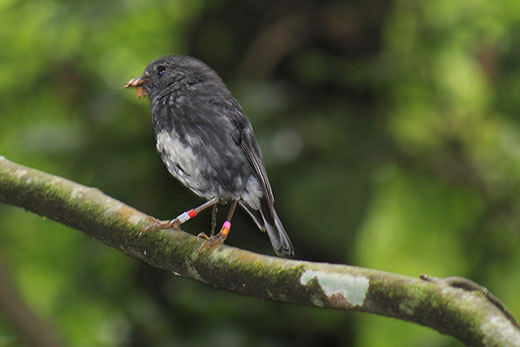
The tiny and inquisitive native robin is among the birds visitors are most likely to see at Maungatautari Sanctuary Mountain. Photo by Phil Brown Photography.
The sanctuary is thought to be large enough to support a population of up to 1000 breeding pairs of kiwi.
Although the public can walk the mountain tracks, tours with experienced guides to the Southern Enclosure and Tari wetlands are an excellent way to enjoy the mountain and learn about its flora and fauna, and plans for the future.
The walk-through Southern Enclosure includes the chance to climb the 16 metre Lions Club Tower up into the canopy.
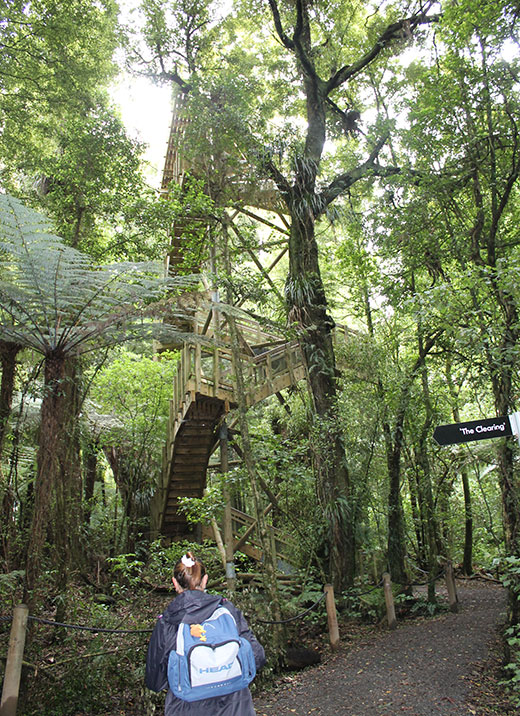
The walk-through Southern Enclosure includes the chance to climb the 16 metre Lions Club Tower up into the canopy.
Cheeky kaka
Birds are everywhere but the most obvious, and most cheeky, are the kaka which delight with their acrobatic antics in a clearing where they come to be fed by guides.
Those who conceived the Maungatautari vision knew excluding pests would give native wildlife a chance to flourish. But some of the results have surprised and exceeded even their most ambitious expectations.
These include the discovery of the rare Hochstetter’s frog in 2004 and the re-emergence of a giant native moss Dawsonia superba, which was thought to be extinct on the mountain.
Tuatara have been re-introduced, takahe are raising young, and freshwater crayfish, koura, inhabit the streams.
Even if all the creatures and plants of the trust’s ‘wish list’ are successfully re-introduced, Maungatautari will never again be as it was in pre-human times.
Since people began arriving in NZ one in three of its native species have become extinct.
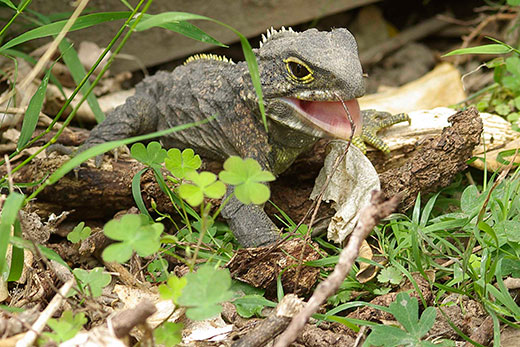
Tuatara are among species re-introduced to the Maungatautari Sanctuary Mountain ecological island. Photo by Phil Brown Photography.
Safe home
The forest and its birds are intrinsically linked, replying on each other for survival.
Since the extinction of the moa, the kereru (native pigeon) is now the only fruit-eater able to swallow fruit with large seeds, ensuring future generations of trees such as tawa, miro, karaka and nikau are widely spread.
Unlikely as it may seem – the moa might once again walk the mountain.
Scientists have had limited success with ‘de-extinction’ through the birth of a Pyrenean ibex, which had been extinct since 1989, but the cloned animal born to a surrogate mother only lived for 10 minutes.
However, the trust, its eight full-time staff, at least 300 volunteers, trustees and landowners are focusing on the flora and fauna currently in existence which can find a safe home at Maungatautari.
For more information about Sanctuary Mountain go to www.sanctuarymountain.co.nz
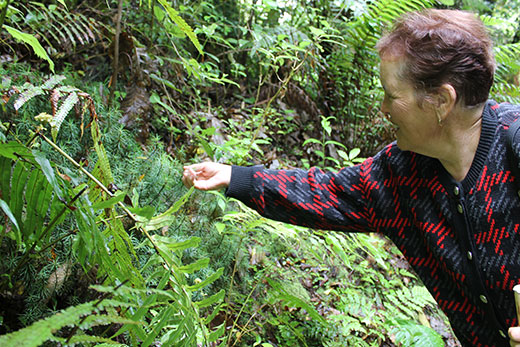
Robyn Smith of Waihi feels the softness of the giant native moss Dawsonia superba, which was thought to be extinct on the mountain.


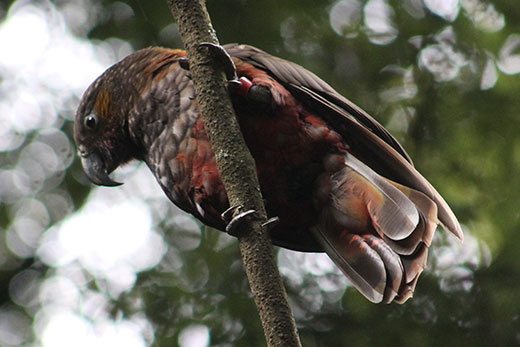
0 Comments
Leave a Comment